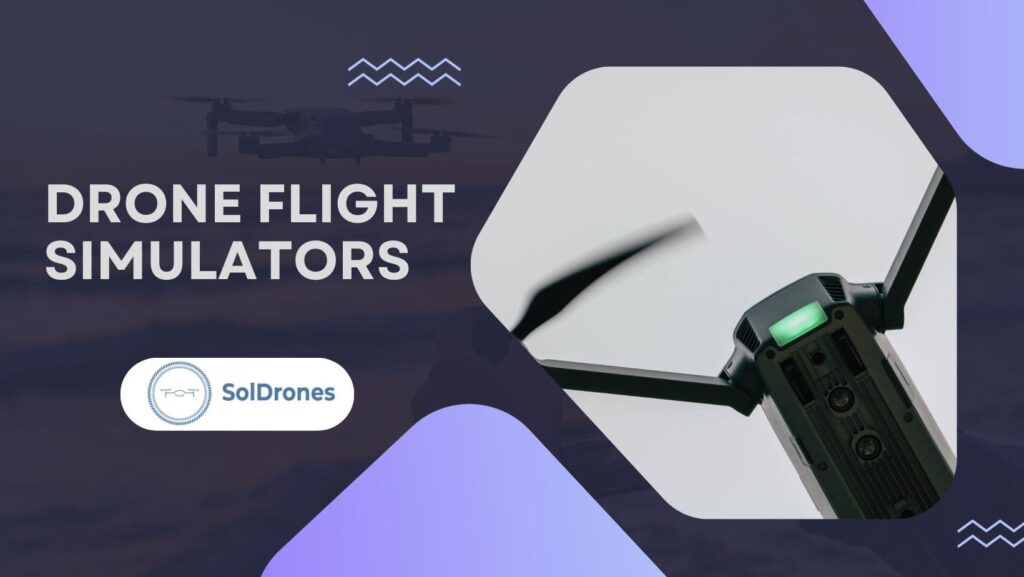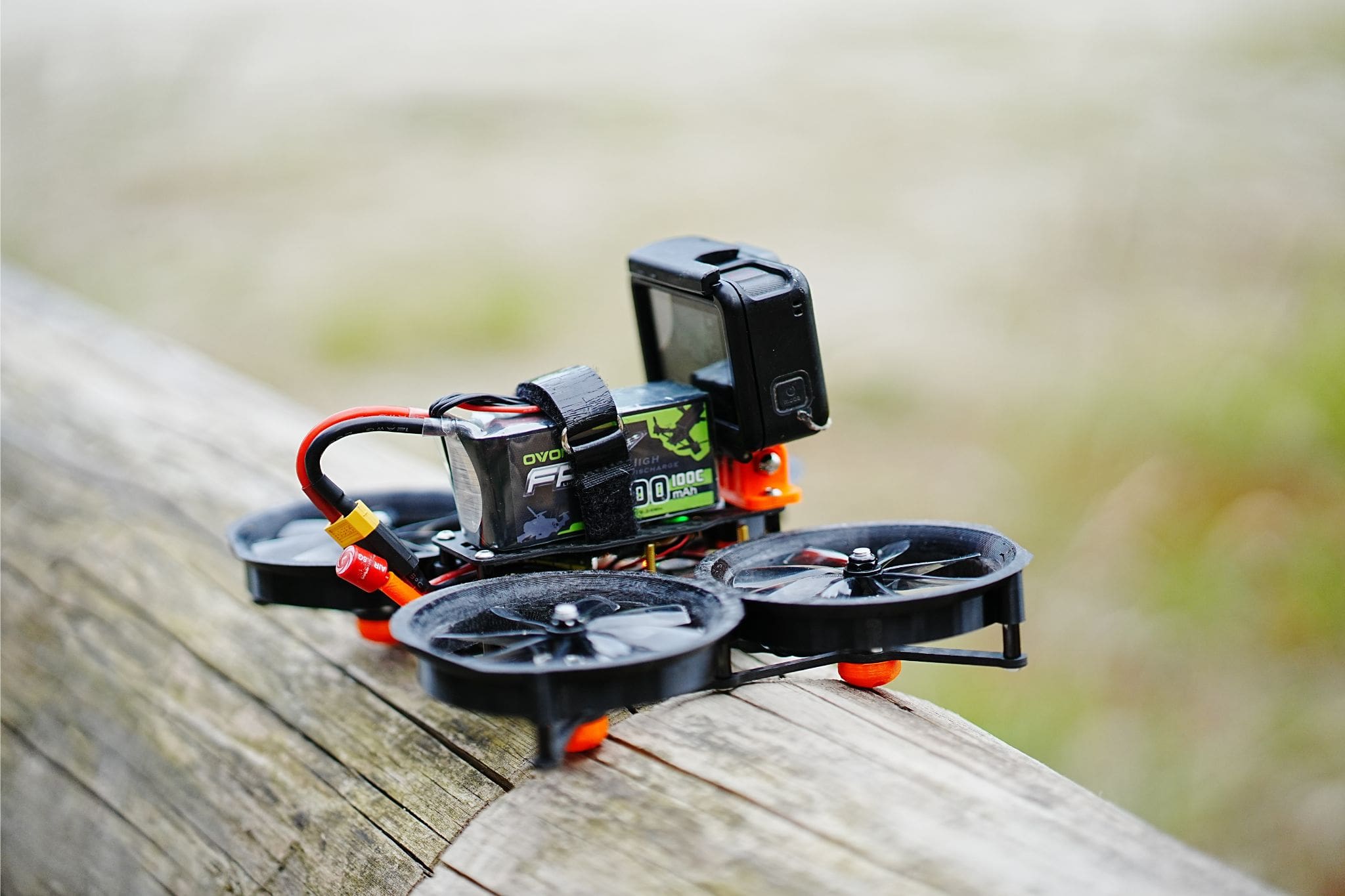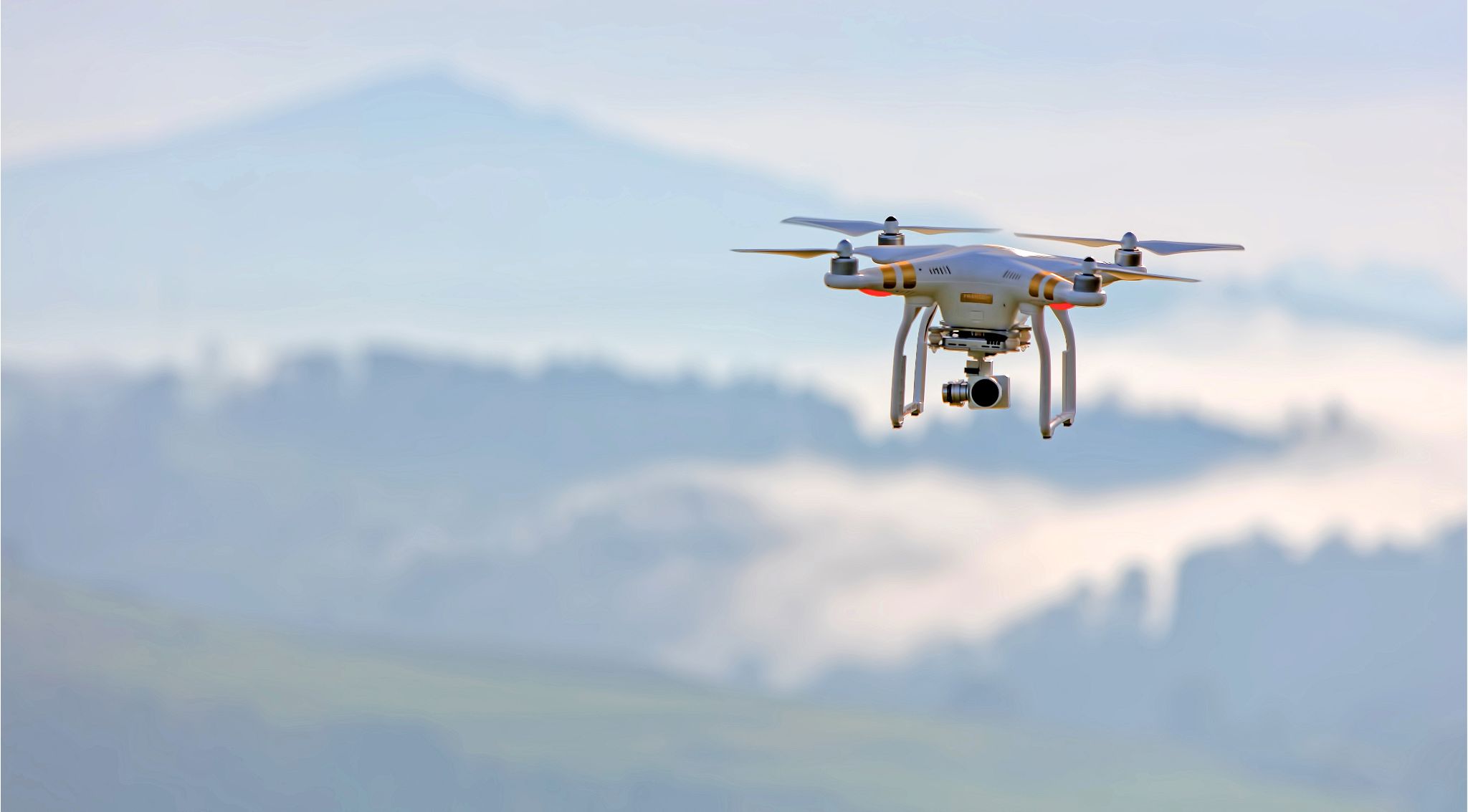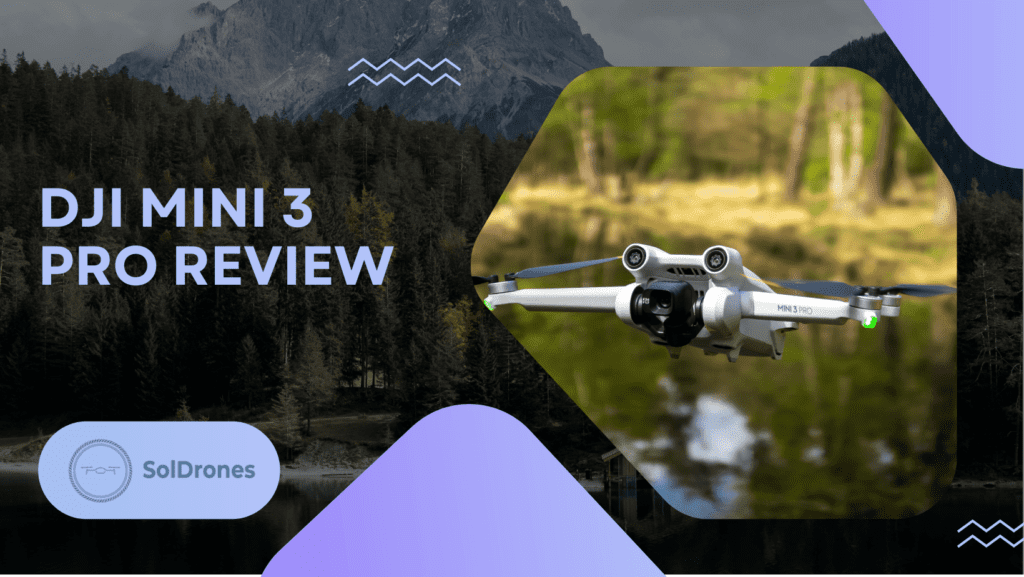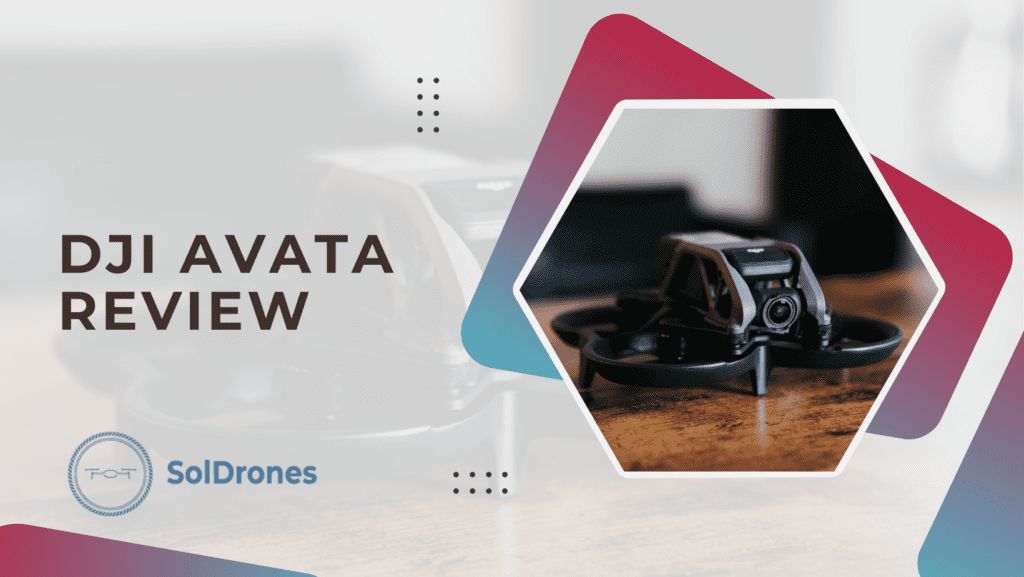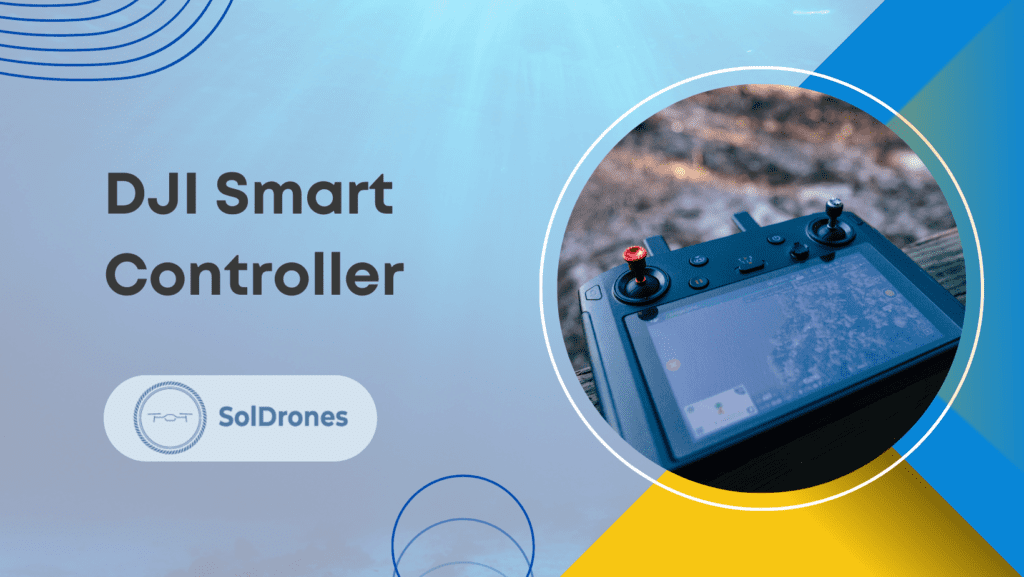Obviously, you want your drone to last as long as possible and one of the best ways to do that is to….not crash it.
Sadly, some drone pilots crash their drone on the first flight. It’s the name of the game especially when you aren’t trained.
But the good news is, you can crash a drone without damaging your actual physical drone by using a drone flight simulator.
In this article, we provide you with some tips on which drone flight simulators to use depending on the type of drone you’re flying, such as an FPV drone, or even based on the drone model.
To cut to the chase, a couple top drone flight simulators include:
- Zephyr: https://zephyr-sim.com/
- DJI Flight Simulator: https://www.dji.com/simulator
Article Highlights
- FPV drone simulators offer realistic, risk-free training for both novices and pros.
- Zephyr and DJI simulators stand out for their accurate flight physics and diverse scenarios.
- Free and affordable simulators like ORQA FPV Skydive and Tiny Whoop GO democratize training.
What is a Drone Flight Simulator?
Drone flight simulators are digital platforms designed to imitate the real-world flying experience of drones. Just as flight simulators for aircraft have been around for decades, helping pilots train without leaving the ground, drone simulators serve a similar purpose.
This is a classic video by andyescapes where he shows what it’s like to go from flying 100 hours on an FPV simulator to his first flight in real life.
Video Credit: andyescapes
As you can see, flight simulators provide users with an environment to practice, train, and enhance their flying skills without the risks associated with actual flights. This not only reduces potential damage to expensive equipment but also ensures the safety of the surroundings.
Simulators play a pivotal role in bridging the gap between novice enthusiasm and professional expertise.
These simulators incorporate real-world physics and flight scenarios, ensuring the virtual experience is as close to reality as possible. This makes them invaluable for both recreational fliers looking to hone their skills and professionals preparing for specific tasks, from filmography to surveying.
Now, an integral part of drone simulators, especially in the realm of racing, is FPV or First Person View. FPV allows pilots to control and navigate the drone from a pilot’s perspective, essentially placing them in the “cockpit” of the drone. A camera mounted on the drone transmits real-time video to a screen, goggles, or other devices, providing the pilot with a first-person viewpoint.
FPV’s relevance in drone flying is multifaceted. For racers, it’s about immersion and precision. FPV provides a more accurate and intuitive flying experience, allowing pilots to navigate tight spaces and make split-second decisions.
For commercial drone operations, FPV can be critical in tasks like inspection, where close-up views and detailed imagery are essential. It bridges the gap between the pilot and the environment, offering a perspective that traditional third-person flying simply can’t match.
The Importance of Accurate Flight Physics in Drone Simulators
In the world of drones, the term “flight physics” refers to the principles and laws that govern how drones move and react in different environments. For a drone simulator to offer genuine value, replicating these principles is paramount.
The Role of Real-World Physics
When a drone tilts, ascends, or descends in the real world, it’s adhering to the laws of physics. Factors like gravity, air resistance, and momentum all play their roles. In a simulator, the importance of emulating these factors can’t be understated.
If a drone’s simulated behavior doesn’t match its real-world counterpart, the training and experience derived from the simulator can be misleading, if not outright counterproductive.
Why Accurate Flight Characteristics Matter
The essence of a simulator lies in its ability to provide a safe space for trial and error. Pilots, whether novices or veterans, rely on simulators to prepare for real-world scenarios. If the simulator’s flight characteristics are off-mark, it could result in pilots developing poor habits or misunderstandings about how a drone will respond in certain situations.
Realistic Simulated Flying: Beyond Just Practice
An accurate simulator does more than just imitate; it immerses. When the drone in the simulator behaves as it would in the real world, pilots can genuinely feel the weight of their decisions. This realistic experience, akin to actual flying, is invaluable in building confidence and skills.
Benefits of Training with Accurate Physics
Training on a simulator with precise physics offers numerous advantages. Firstly, it reduces the risk of costly mistakes during real flights. Understanding how a drone responds to commands in different conditions prepares pilots for unexpected challenges.
Moreover, it fosters a deeper understanding of drone behavior, allowing pilots to make more informed decisions, especially in complex flying scenarios.
The precision of flight physics in drone simulators is a linchpin for effective training. As drones continue to play larger roles in various industries, ensuring pilots are well-equipped through accurate simulation becomes all the more crucial.
A Deeper Dive into FPV Drone Racing
The realm of drones is vast and varied, but few segments of this industry match the exhilarating pace and intensity of FPV drone racing.
FPV, or First Person View, is a unique form of drone piloting where operators fly their drones using a live video feed sent directly to their goggles or screens, essentially seeing what the drone sees in real-time. It transforms the act of flying into a fully immersive experience, allowing pilots to navigate tight corners, dodge obstacles, and race at high speeds.
This thrilling discipline has given rise to organized competitions, with the Drone Racing League (DRL) standing out as a premier example.
DRL not only offers a platform for the world’s best drone racers to compete but has also played a pivotal role in popularizing the sport, drawing attention from sponsors, media, and a growing global audience.
Professional FPV drone racers are akin to athletes in other competitive domains, rigorously training to hone their skills and reflexes. While natural talent plays a role, consistent practice is a necessity, especially given the precision and split-second decisions required during races.
This is where drone simulators come into the picture. Given the cost, risk, and logistic challenges of practicing in real-world racing environments, many professionals turn to simulators as a primary training tool.
These simulators recreate racing courses, allowing pilots to familiarize themselves with the layout, develop strategies, and sharpen their reaction times, all without leaving the ground. The fusion of accurate flight physics with realistic race scenarios makes them invaluable.
Through these virtual training grounds, racers can experience countless flight hours, refining their techniques and preparing for the intense competition that awaits in the real world of FPV drone racing.
The Zephyr Drone Simulator: A Benchmark in Flight Simulation
The world of drone simulators is vast, with many platforms vying for the attention of eager pilots. Yet, there’s one name that frequently rises above the rest in discussions among professionals and enthusiasts alike: The Zephyr Drone Simulator.
With its advanced features and relentless focus on providing an authentic flying experience, Zephyr has positioned itself as a benchmark in the realm of flight simulation.
Features and Capabilities:
- Custom-Built Flight Engine: At the heart of the Zephyr Drone Simulator is its custom-built flight engine. This isn’t just any ordinary software foundation. It’s a meticulously designed mechanism that strives to replicate the intricacies of real-world drone flight. Such precision is essential, especially for those training for professional applications, as it ensures that skills developed in the simulator will transfer seamlessly to real-world operations.
- Expanding Library of Flight Scenarios: A major selling point of the Zephyr Drone Simulator is its vast and constantly growing library of flight scenarios. These range from serene countryside flights to high-intensity urban races, providing pilots with a plethora of environments to train and test their skills.
This diverse array ensures that users never find the experience stale, with new challenges always on the horizon. - Ultra-Low Graphics Mode: While high-resolution graphics can be visually stunning, they can sometimes strain system resources, leading to lag. Recognizing this, Zephyr includes an ultra-low graphics mode. This allows pilots to optimize performance, ensuring a smooth and uninterrupted flight experience, crucial for those intense training sessions or when using less powerful hardware.
As the drone industry continues its upward trajectory, tools like the Zephyr Drone Simulator play an indispensable role in preparing pilots for the challenges ahead. It’s not just about flying; it’s about mastering the art of flight in diverse scenarios, understanding the nuances of your drone’s behavior, and consistently pushing the boundaries of what’s possible.
In an era where precision and preparation can make all the difference, the Zephyr Drone Simulator stands out as a trusted ally for those committed to soaring to new heights.
Whether you’re a budding hobbyist or a seasoned professional, Zephyr’s commitment to realism and excellence ensures it’s an investment that pays off in improved skills and confidence.
DJI Drone Simulator: Bridging the Gap between Recreation and Profession
In the drone world, DJI stands as a towering figure, renowned for its high-quality drones that cater to both enthusiasts and professionals.
But it isn’t just in hardware where DJI has made a mark; their software ventures, notably the DJI Drone Simulator, offer a compelling blend of recreational and professional training tools.
This platform bridges the gap, ensuring that both hobbyists and commercial pilots have a comprehensive tool at their fingertips.
An Overview: DJI’s Approach to Simulation
DJI’s simulator isn’t just a game; it’s a training ground. Designed with a leaning towards commercial drone uses, it acknowledges the growing need for professional drone pilots in various sectors.
Whether it’s for cinematic shots in filmmaking, agricultural assessments, or inspection of infrastructures, the DJI Drone Simulator aims to prepare its users for real-world applications.
Flight Scenarios and Training Modules:
- Diverse Environments: From nighttime cityscapes to gusty coastlines, the simulator offers a range of environments. These scenarios challenge pilots to adapt to various conditions, replicating the unpredictability of real-world flights.
- Skill-Based Challenges: Beyond just free flight, there are specific modules designed to hone particular skills. These could be precision landing tasks, obstacle navigation, or even tracking moving objects – all crucial abilities for a commercial drone pilot.
Versions to Suit Every Need:
- Free Version: For those just dipping their toes into the waters of drone simulation, DJI offers a free version. It’s a generous taste of what the simulator can do, providing budding pilots with a chance to practice basic skills.
- Paid Version: The comprehensive, paid version is where the simulator truly shines. Expanded scenarios, more advanced training modules, and features tailored for the serious drone pilot make it a worthwhile investment.
In conclusion, the DJI Drone Simulator is more than just a recreational platform. It’s a training academy, a testing ground, and a sandbox for experimentation all rolled into one. For those seeking to transition from casual flying to more professional endeavors, it stands as an essential bridge.
With tools like this at one’s disposal, the journey from hobbyist to professional becomes a more structured and informed experience. DJI, with its simulator, ensures that every pilot, regardless of their intent or expertise level, has the resources to reach their highest potential.
Quadcopter FX Simulator: A Peek into Realistic Flight Dynamics
In the expanding universe of drone simulators, the Quadcopter FX Simulator has carved out a niche for itself, primarily due to its undiluted emphasis on realistic flight dynamics. It’s not just a visual treat, but a tactile one, where users can truly sense the push and pull of physics as they navigate their virtual drones through a myriad of scenarios.
Spotlight on Features: Quadcopter FX Simulator
- Advanced Controls: The Quadcopter FX Simulator boasts of a range of controls that mimic real-life drones. From altitude hold to position hold, users can get a grasp of the intricate nuances of piloting a drone.
- Versatile Environments: Whether it’s a calm sunny day or a blustery evening, the simulator provides various atmospheric conditions. This helps pilots understand how different weather elements can affect drone dynamics.
Real-World Physics: Bridging Virtual and Reality
At the heart of the Quadcopter FX Simulator is its commitment to mimicking real-world physics. By doing so, it offers an experience that’s more than just visual; it’s visceral. Pilots can genuinely feel the effects of wind gusts, inertia, and drag, which are all crucial factors in real drone flight.
- Weight and Balance: Just as in real life, the simulator factors in the weight of the drone and its balance. This ensures users understand the importance of payloads and how they can affect flight dynamics.
- Propulsion Dynamics: The Quadcopter FX Simulator does an excellent job of simulating propulsion dynamics, making users feel the power and limitations of their drone’s motors and propellers.
In wrapping up, the Quadcopter FX Simulator serves as a testament to how far drone simulation technology has come. By emphasizing realistic flight dynamics and integrating real-world physics, it provides an experience that’s both informative and immersive.
For budding drone enthusiasts and seasoned professionals alike, tools like these are invaluable. They offer a risk-free environment to understand the complexities of drone flight, ensuring that when they take to the skies in reality, they do so with confidence and competence.
Commercial Drone Operations and Simulators
The commercial drone industry has seen exponential growth in recent years, permeating sectors from agriculture to search and rescue. As industries increasingly integrate drones into their operations, the need for proficient, well-trained pilots escalates. Drone simulators have risen to this challenge, offering a risk-free environment for pilots to hone their skills.
For businesses, the stakes are high. A mishap can result in significant financial loss or even jeopardize human lives, especially in critical operations like search and rescue or infrastructure inspections.
By turning to simulators, companies ensure their pilots are well-acquainted with scenarios they’ll face in real-life missions. This training goes beyond basic flight maneuvers, encompassing specific tasks such as precision agriculture spraying or intricate infrastructure surveys.
The realism in today’s simulators is nothing short of remarkable. They replicate the exact conditions pilots might face, from unpredictable weather patterns to challenging terrains.
Such accurate flight scenarios in training ensure pilots aren’t caught off guard when they encounter these situations in reality. The better the simulator prepares a pilot for real-world conditions, the safer and more effective their real-life operations will be.
Furthermore, the Federal Aviation Administration (FAA) has stringent guidelines governing commercial drone operations. While the primary objective of these guidelines is safety, they can be intricate.
Simulators play an instrumental role here. They don’t merely teach pilots how to fly; they also acquaint them with FAA regulations. Through simulated flights, pilots can internalize these guidelines, ensuring that when they fly actual missions, they’re not just skilled but also compliant, setting the gold standard for commercial drone operations.
The Rise of Free and Affordable Drone Simulators
In the ever-evolving world of drones, access to training tools is becoming increasingly democratized. Gone are the days when high-quality drone simulators were a luxury, affordable only by the deep-pocketed or professional organizations.
Today, a variety of free and cost-effective simulators are making waves in the drone community, offering budding pilots and enthusiasts alike the chance to sharpen their skills without burning a hole in their pockets.
Among the frontrunners in this accessible wave is the ORQA FPV Skydive, a simulator that’s garnered attention for its user-friendly interface and realistic flight dynamics.
Then there’s Tiny Whoop GO, which brings to the table a fun yet challenging platform perfect for both novices and seasoned pilots. Not to be outdone, Flowstate stands out with its precision and attention to detail, making every flight feel almost like the real deal.
A common thread weaving through these platforms is the emphasis on a constantly expanding library of flight scenarios. This continual addition keeps the simulators relevant, challenging, and engaging, ensuring pilots always have something new to learn.
Furthermore, recognizing that not every user has access to high-end computing hardware, many of these platforms, like Tiny Whoop GO, have introduced an ultra-low graphics mode. This ensures that even those with less powerful PCs can enjoy a seamless flying experience, proving that in the world of drone simulators, quality training doesn’t always come with a hefty price tag.
Final Thoughts
In the rapidly advancing world of drones, simulators play a pivotal role in bridging the gap between novice enthusiasm and professional expertise. These digital platforms, ranging from the adrenaline-packed universe of FPV drone racing to critical search and rescue operations, underscore the significance of accurate flight physics and real-world scenarios in pilot training.
With tools like the Zephyr and DJI Drone Simulator leading the pack, users not only have access to precise flight dynamics but also to a diverse range of scenarios, aiding comprehensive training.
Moreover, the emergence of free and affordable simulators ensures that quality training is accessible to all, irrespective of their financial means. In essence, as drones continue to find their place in diverse sectors, from commercial operations to emergency missions, the right simulator can be the key to unlocking proficiency, ensuring safety, and achieving unparalleled flying experiences.
FAQs
What is the purpose of a drone simulator?
Drone simulators provide a digital platform for aspiring and professional pilots to practice flying drones without the risks of real-world flying. They offer realistic flight physics and scenarios, aiding comprehensive training.
How do drone simulators aid in FPV drone racing?
Drone simulators allow racers to practice and hone their skills in a risk-free environment. Many professionals use simulators for training before participating in events like the Drone Racing League.
Why is accurate flight physics essential in a drone simulator?
Accurate flight physics ensure that the simulated flying experience closely mirrors real-world drone flying. This precision is crucial for pilots to gain genuine skills that can be applied in real flight situations.
How are drone simulators beneficial for commercial operations?
Simulators provide a training ground for commercial drone pilots, allowing them to practice in real-life conditions, understand FAA guidelines, and be better prepared for tasks like inspections, surveillance, or search and rescue missions.
Are there any notable free drone simulators?
Yes, there are several free simulators like ORQA FPV Skydive, Tiny Whoop GO, and Flowstate. These platforms, while free, offer a comprehensive range of flight scenarios and some even feature ultra-low graphics mode for optimal performance on less powerful PCs.

